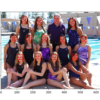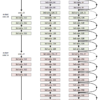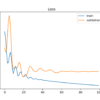Face detection is a computer vision problem that involves finding faces in photos. It is a trivial problem for humans to solve and has been solved reasonably well by classical feature-based techniques, such as the cascade classifier. More recently deep learning methods have achieved state-of-the-art results on standard benchmark face detection datasets. One example is […]










